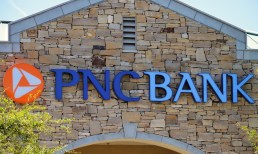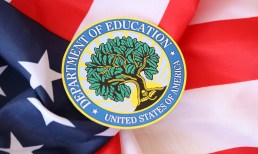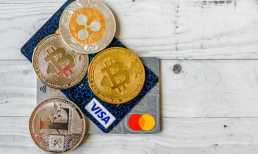The next six weeks will arguably be the most impactful slice of economic time since 2008 and maybe of the last 50 years. What many analysts have called “the great American social experiment” has already kicked off as many Americans have received their share of the $1.9 trillion stimulus package over the weekend.
The amount a person receives of the third stimulus package within one year depends on income level, household structure and employment status. But $1,400 checks per eligible person are hardly the most important element of this plan. The macro view — the state of the overall economy as the pandemic finally starts its downward trend — is critical for the payments and commerce space to consider both for the short-term and long-term economic recovery.
Here’s why. This is a unique moment in economic history. Digital-shift and pandemic aside, March-April 2021 will be notable for the huge variances between sector by sector recovery. It is also notable for the differences between the fortunes of income levels that stretch from the out of work and paycheck-to-paycheck bracket to the highest earners. But here’s perhaps the biggest factor that will define this next few weeks. Americans are among the global economies sitting on $2.9 trillion in savings racked up during a year when they spent heavily in some areas (stay-at-home economy) and cut back almost entirely in others (travel, dining out). About half that $2.9 trillion savings is in the U.S. Many analysts say this unprecedented amount of savings will be the real driver in the post-COVID economic recovery. Those $1,400 checks, for many consumers, are just icing on the cake.
To get a sense of how massive the savings-based opportunity is, Bloomberg says that all the money in the U.S. saved in the past year would result in 9 percent GDP growth rather than the 4.6 percent currently projected for 2021. If those savings go unspent, the economy will grow just 2.2 percent.
“Short term, a lot depends on post-pandemic behavior — which may take time to revert to pre-pandemic norms,” said Yelena Shulyatyeva, senior U.S. economist for Bloomberg Economics. “Medium term, whether the extra funds go to consumption, paying down debt or even stay in the bank as a rainy-day fund, that’s a positive for growth.”
Third Time’s A Charm?
Advertisement: Scroll to Continue
As the newest stimulus plan rolls out, it’s worth taking a look at how the first two programs were spent (or saved). During the first round in the spring and summer of 2020, the National Bureau of Economic Research (NBER) found that recipients of the initial $2.2 trillion in stimulus checks tended to use those payments to bolster their savings or pay down debt — and only a small percentage of those surveyed actually spent that money. NBER found that 33 percent of the roughly 12,000 individuals queried said they saved the payments, while 52 percent paid down debt. Roughly 71 percent of the respondents who answered questions about their income said they earned less than $80,000 annually. Only 15 percent spent the funds, and then only a portion of it, at about 40 percent. Breaking that down, of the remaining 60 percent, half went to savings and half went to pay down debt.
That accounts for a part of the current $1.5 trillion in savings. The second phase of stimulus in 2020 went to more basic necessities. According to a survey from ApartmentGuide.com, the highest percentage of respondents (19.9 percent) indicated that they would put their stimulus check toward rent followed by utilities (18.2 percent).
Another 12.64 percent of respondents indicated they planned to spend their check on food or groceries. About 15 percent put the money into savings.
Now comes number three: a richer package piled on top of savings. With so many publicly-traded companies betting on pent-up demand in their 2021 outlooks, including every vertical from banks to travel to restaurants, many analysts agree that the second half of 2021 will see a reasonably fast recovery. That recovery will come mostly from the economic spectrum’s upper echelons and will be fueled by a combination of vaccines, stimulus, and savings.
“A material increase in vaccination rates by second-half 2021 will likely lead to a significant increase in consumer confidence and spending,” said an early March report from Fitch Ratings. “Substantial pent-up demand from high-income households, which typically consume a much higher share of services constrained by the pandemic and also hold most of the excess savings, will likely result in more robust consumer spending once movement restrictions ease more fully.”
The Counter Arguments
Not everyone is sold on the savings stimulus theory. The University of Pennsylvania’s Wharton School estimates that 73 percent of the proposed $1,400 relief payments will go directly into household savings, and 27 percent will go toward increased consumption, producing only small stimulative effects.
Economist Ken Tumin, writing in the DepositAccounts blog, believes the new stimulus package will only exacerbate what some analysts call “excess savings.” He says the new stimulus package will add to record deposit levels at banks and credit unions. As he points out, when banks and credit unions have more deposits than they need to fund loans, they generally lower deposit rates. That, he says, maybe the fuel needed to turn savers into spenders.
The concept of “excess savings” has been trending among economists since the new stimulus package has taken shape. For example, the World Economic Forum’s take on the impending recovery tips the hat to the excess savings seen so far in the pandemic era. It notes that between 25 percent and 40 percent of government stimulus checks so far (by its research) have been spent on consumption. It also noted that this percentage also held true after the 2008 financial crisis.
However, the WEF does not place current savings as excessive in the larger context of economic history and will not be the primary driver in the post-COVID-19 economy. “Although large by historical standards, the savings accumulated by U.S. households during the pandemic do not appear to be ‘excessive’ when set against the extraordinary need of many American families and the unprecedented government intervention to support them,” said a WEF report in March. “It is certainly possible that some of these savings will pay for extra travel and entertainment once the COVID-19 nightmare is behind us, but our conclusion is that the resulting boost to expenditures will be limited. This conclusion does not rule out a strong economic recovery from the virus shock. It only implies that spending out of accumulated savings won’t be one of its major drivers.”




